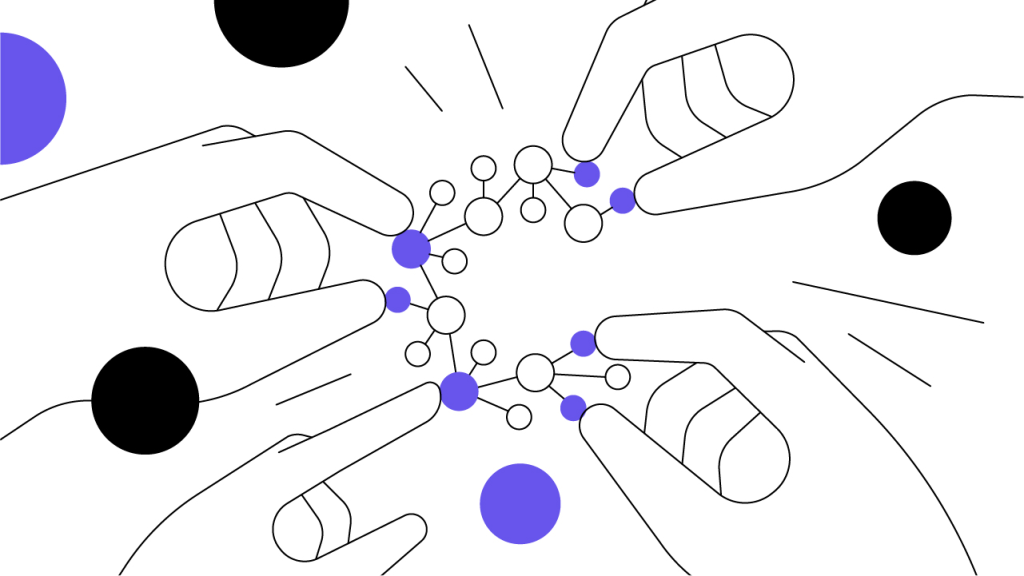Contents
The Casper Network: A Dev-Friendly Enterprise Blockchain
The Casper Network is improving how enterprises build and upgrade new products and services on the blockchain.

Summary
The Casper Network is a Proof of Stake (PoS) enterprise blockchain that is designed to help enterprises begin building blockchain-enabled products and services quickly and effectively. The Casper Network features upgradeable smart contracts, developer-friendly features, and lower transaction costs than most Layer-1 blockchain offerings. Casper uses a type of PoS consensus protocol called Casper CBC, which is what the Ethereum network is expected to adopt once it transitions to its eventual 3.0 model. As a result, the team behind the Casper Network sometimes refers to the project as the “final evolution” of Ethereum.
Casper Network’s Enterprise Offerings
The Casper Network is a blockchain that makes it as easy as possible for enterprises to build blockchain-enabled products and services. The project was founded to solve the problems that existing solutions face in their struggles to support global enterprise adoption without making significant sacrifices in . In order to help enterprises achieve more balance between those three goals, the Casper blockchain offers the following features:
Upgradeable Smart Contracts: Casper facilitates the upgradability of that have already been deployed , reducing the need for complex and costly migration processes while also streamlining the process of quickly patching smart contract vulnerabilities detected within a system. Such functionalities are a marked departure from how smart contracts have historically been developed on most other enterprise blockchains, which have usually not allowed smart contracts to be edited by anyone — including the original developers — once deployed. Upgradability features can help businesses to build resilient and scalable blockchain-based products and services that adapt to changing customer needs and shifting business priorities.
Developer-friendly features: While most blockchain projects require developers to use or another blockchain-specific programming language, the Casper crypto protocol supports building in and , frequently used coding languages among mainstream developers today. By opening the doors to the millions of developers worldwide, Casper helps make it easier for businesses to find high-quality talent to help future-proof the organization. Additionally, CasperLabs has created the Caspiler, a code transpiler that automates the conversion of Solidity code into Rust. This tool further lowers the barriers to enterprise adoption by simplifying how developers migrate their from onto the Casper Network.
Lower Gas Costs: The Casper blockchain network’s PoS consensus mechanism allows for higher throughput and less network congestion when compared to many competing Layer-1 blockchain projects. The network’s are designed to improve price stability during changes in order size or periods of high transaction volume. Additionally, as of 2021 the CasperLabs team is working towards a predictive gas market which would allow enterprises to reserve gas ahead of time at predetermined prices, thereby making it easier to plan for the future.
Weighted Keys: Many enterprise blockchains only allow binary (on or off) smart contract access permissions for users, which can make it difficult for larger teams to effectively work together and manage complex applications and systems. By contrast, the Casper Network’s weighted keys feature allows enterprises to establish more granular, multilevel system access permissions, which can make it easier to ensure the security and quality of the organization’s assets.
Casper Network’s CSPR Token
Casper's ecosystem is underpinned by its native cryptocurrency, CSPR, which is used to reward network validators for processing on-chain transactions via Casper's PoS consensus mechanism. CSPR was first issued via an through CoinList, although it is now available on several popular . The initial supply of CSPR tokens was 800 million, and the follows a slightly inflationary issuance schedule.
Casper CBC vs. Casper FFG
While the Casper Network is its own standalone project, its name is sometimes confused with the Ethereum network’s implementation of . It’s worth taking the time to differentiate the two. The Casper Network utilizes a type of consensus mechanism called . Casper CBC is the brainchild of Vlad Zamfir, a blockchain veteran who helped create Ethereum. Casper’s current , the Highway Protocol, is based on the original Casper CBC specification, with several improvements in terms of block finality and network flexibility.
By contrast, Ethereum is in the process of transitioning its PoW model to , which involves a hybrid PoW/PoS protocol called . Under Casper FFG, Ethereum’s blocks will still be mined using PoW, and only around 2% of blocks will be finalized by network validators under this setup. As a result, Casper FFG is part of Ethereum’s multi-step transition to a full PoS system, and Ethereum’s 3.0 version will likely run on something akin to Casper CBC. As a result, CasperLabs occasionally refers to its project as the “final evolution” of Ethereum, even though the two are completely separate projects.
Casper Blockchain Uses in the Real World
CasperLabs, the organization behind the Casper Network, is composed of a wide array of former executives from top enterprises such as Microsoft, Google, and Adobe. The team’s enterprise background helped inform Casper’s design, and while the project has been in the works in some form or fashion since 2015, the project has undergone extensive development and its mainnet only launched in March 2021. Recently, the team behind Casper created a separate organization called the Casper Association, a nonprofit entity tasked with overseeing the ongoing evolution and decentralization of the Casper Network.
Casper is ramping up its efforts and has managed to lock in several impressive partnerships, including a recent partnership with SJM Group to promote Web 3.0 adoption across the United Arab Emirates. An increasing number of developers are choosing to build products and services on Casper, ranging from and gaming projects to infrastructure and solution providers.

Author
Is this article helpful?
